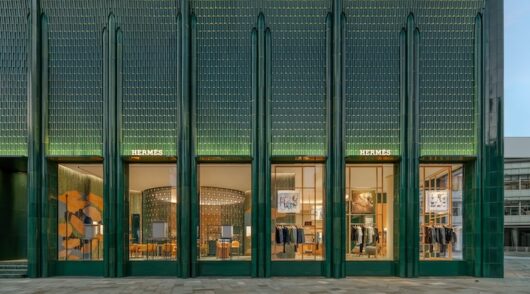Amazon’s technological investment in demand prediction and inventory placement is quietly revolutionising its global retail operations. The tech giant has transformed the way it manages demand and inventory through its use of algorithms and machine learning – anticipating the needs of millions of customers to deliver products with unprecedented speed. Central to Amazon’s predictive capability is its Supply Chain Optimization Technology (SCOT) division, which powers the company’s decision
cision-making systems for buying and inventory placement worldwide.
Billions of predictions and deliveries
The SCOT division works to solve the foundational question: For each item in Amazon’s assortment, how much stock is needed and where should it be placed?
Amazon’s director of SCOT, Abishek Gupta, believes the answer to that question determines not only how Amazon buys and stores goods, but also how it delivers on its promise of fast, even same-day, delivery to customers.
“Our supply chain optimisation technology systems analyse millions of data points to predict demand before it exists, forecasting customer needs before they arrive,” Gupta told Inside Retail.
“The transformer-based AI model processes over 400 million items across 270 different timestamps, accounting for everything from holidays to habits, ensuring what you’ll want tomorrow is already within reach today,” he added.
If a specific product sees a surge in demand, the model forecasts this uptick before sales spike, allowing Amazon to position inventory optimally, sometimes as granularly as the city or neighbourhood.
This real-time, data-driven decision-making ensures that items are within reach as soon as customers want them, rather than sitting idle in distant warehouses.
This strategy is powered not just by technology, but by a relentless feedback loop. As soon as the AI model detects changes, the system quickly reallocates inventory.
This cuts down on delivery times, reduces shipping costs and supports sustainability efforts by lowering transportation emissions.
By combining machine learning with a regionalised inventory system, Amazon enables more orders to ship from a single local fulfilment site, reducing transportation distances by placing products closer to customers and helping fulfil orders more quickly.
Amazon also shares its predictive forecasting and informed recommendations with its sellers so they can make more accurate decisions about products and inventory.
As Amazon moves forward, it is working to further align forecasting and fulfilment innovations with sustainability, market adaptation and customer satisfaction at every step.
However, as Gupta pointed out, Amazon’s journey towards demand prediction is ongoing and requires continuous learning from data. There are still moments where Amazon’s demand prediction and inventory placement have proved unsuccessful.
“We kept seeing that we had forecast errors for clear backpacks… and we would just keep seeing them popping up throughout the United States,” Abishek revealed.
As it turns out, Amazon’s algorithm overlooked Taylor Swift’s The Eras Tour and failed to predict a surge in demand for stadium-approved clear backpacks.
For Abishek, the connection between forecasting improvements, better placement, and sustainability is apparent in reduced emissions and increased efficiency.
“One of the things that we are very proud of is when we actually improve our forecasting, which leads to better placement,” Abishek explained.
“When you have better placement, that basically means that the delivery of an item to a customer has to travel less miles, and that is just a huge impact,” he continued.
“When you think about millions of items that we’re selling, that is the sustainability angle.”
Amazon’s use of powerful AI-driven algorithms for demand prediction and inventory optimisation represents a new standard in retail supply chain management.
The unseen intelligence behind “what you’ll want tomorrow” is not only shaping how fast and flexibly Amazon delivers, but also how it continues to lead the industry.







